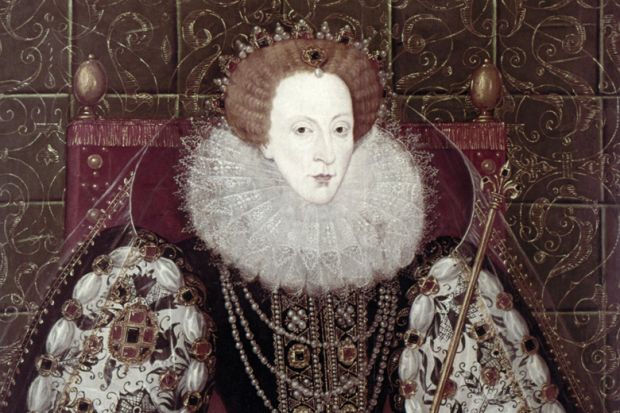The reign of Elizabeth I has a glorious reputation that her contemporaries would have struggled to recognise. For those involved in the Elizabethan political process, the dynastic insecurities attendant upon an unmarried female monarch were compounded by the fruits of religious division and long years of war with the greatest power in Europe. In particular, the Elizabethan regime was in constant interaction, acrimonious and defensive, with an alternative Catholic reality. From a Catholic perspective, Elizabeth could be disqualified on grounds of illegitimacy, or heresy, or both, and there existed a promising substitute in the shape of Mary, Queen of Scots. With government operating in such precarious conditions, political discourse took on new heights of complexity and inventiveness.
Peter Lake reminds us that “the identification of England as a Protestant nation was a fraught and contested political and ideological project, not an inevitable process”. He examines the twists and turns of political exchange, paying particular attention to the “secret histories” that proliferated amid this “sea of rumour, of claim and counter-claim”. His book anatomises the propaganda that surrounded each crisis, including the conspiracies and plots in which Mary, Queen of Scots was implicated, Elizabeth’s projected marriage to the Duke of Anjou, and the recurring anxieties contingent upon war and issues of succession.
This is a valuable account of how political debate acquired new levels of venom, with searching analysis of the printed books, manuscript treatises, plays and rumours in which these secret histories were deployed. Lake also has a wider purpose, claiming that this new kind of “public politics” signalled the appearance of what he has elsewhere termed a “post-Reformation public sphere”. Here the argument enters a hall of mirrors, where it becomes hard to assess the scope of these “sometimes separate and sometimes overlapping publics, both at home and abroad”. Much of this propaganda was at a pitch of sophistication that ruled out broader public engagement. And yet these were issues of enormous significance for every layer of Elizabethan society. Those who framed these secret histories aimed at a wide audience, and if some had limited circulation, sermons and show trials had a far broader impact. Political discourse was certainly acquiring new dimensions under the pressures of so many Elizabethan dilemmas.
Lake never says anything simply, and this book has a convoluted quality that pays inadvertent homage to the intricacies of the works he is discussing. It makes an important contribution on several levels, however, even if none of them is straightforward. It continues the quest of Lake and his collaborator Michael Questier to relocate Catholic thought and identity from the periphery to the centre. It also gives careful nuance to their argument for an Elizabethan “public sphere”. Even if the label is not quite right, this book makes a forceful case for the need to recognise the extraordinary vigour of “public propaganda politics” in this era. As campaigns for both the referendum on Europe and the US presidential election gather momentum, and contemporary political discourse reaches new depths of slander and suspicion, it is striking to see how the Elizabethans pioneered these tactics with such zeal and creativity – and with far more stylish use of rhetoric.
Lucy Wooding is reader in early modern history, King’s College London.
Bad Queen Bess? Libels, Secret Histories, and the Politics of Publicity in the Reign of Queen Elizabeth I
By Peter Lake
Oxford University Press, 512pp, £35.00
ISBN 9780198753995
Published 28 January 2016




